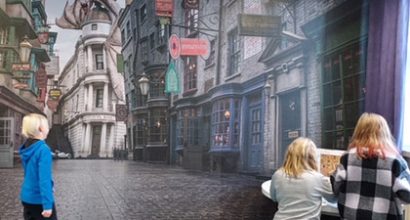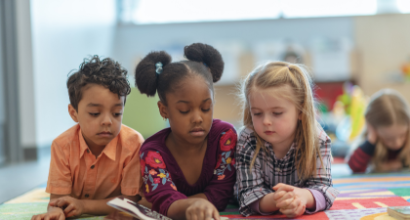Stories Make Readers (StoRe) -pedagogy
Literature as an aesthetic experience brings joy and pleasure to the experiencer. Among the most important tasks of literature education is to direct the child towards receiving pleasure from texts. Enjoying rhymes, playing with sounds and living through plot twists are aesthetic experiences that literature can bring to a reader. The pleasure can be personal or shared, communal. Aesthetic pleasure opens up for a child most easily in interaction and with support from an adult reader. An adult can help a child by highlighting and repeating certain parts in a text and adding multisensory elements to the interpretation. The child will thus learn new ways to enjoy text. Examples from peers, joy and laughter are also parts of a reading session. When a child continues a reading hobby independently, he or she can pay attention to similar parts in a text or use the reading models shown by the adult.
Literature provides a possibility to reflect upon emotions, consider one’s personal decisions in life and perceive reality from new perspectives. The world of stories thus increases our understanding of the surrounding reality and provides us with keys to personal well-being. A child needs help from an adult to recognize and organize experiences from literature and the emotions it evokes. With an adult, it is possible to provoke feelings of empathy, build up corrective experiences and expand one’s thoughts. Supporting children’s well-being with literature requires clever, interactive literature education. A parent or a close adult can help the child to engage with a story in many ways, such as by immersing him or herself in the text, organizing a shared intimate reading session, discussing the book’s events and helping to compare them to the child’s personal life and experiences. This kind of interactive literature education provides tools to support the child’s social-emotional development (Clark, Van Dyke, Tussey & Haas 2021).
Creating a meaningful connection to a text is not a simple process; it depends on many aspects, such as the reader’s attitudes and prior experiences with reading and literature (as well as in life), vocabulary and literacy skills, culture, and worldview (Aerila et al., 2016). The younger the readers or listeners are, the more the interpretations of a text vary (Appleyard, 1991). Consequently, more effort must be made to solidify the children’s interpretations and give the children tools to make their interpretations visible to themselves, their peers, and adults (Kauppinen & Aerila, 2020).




